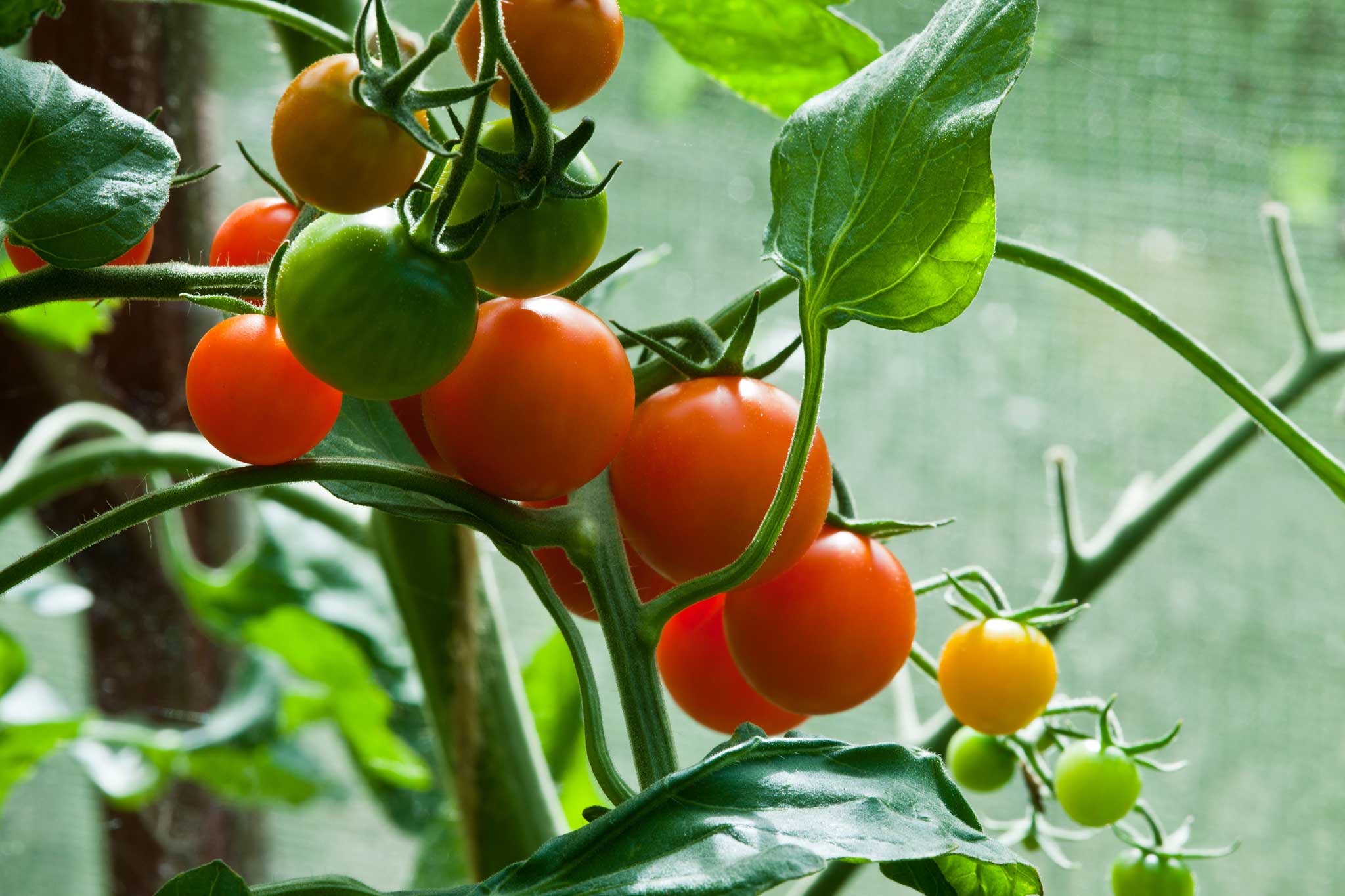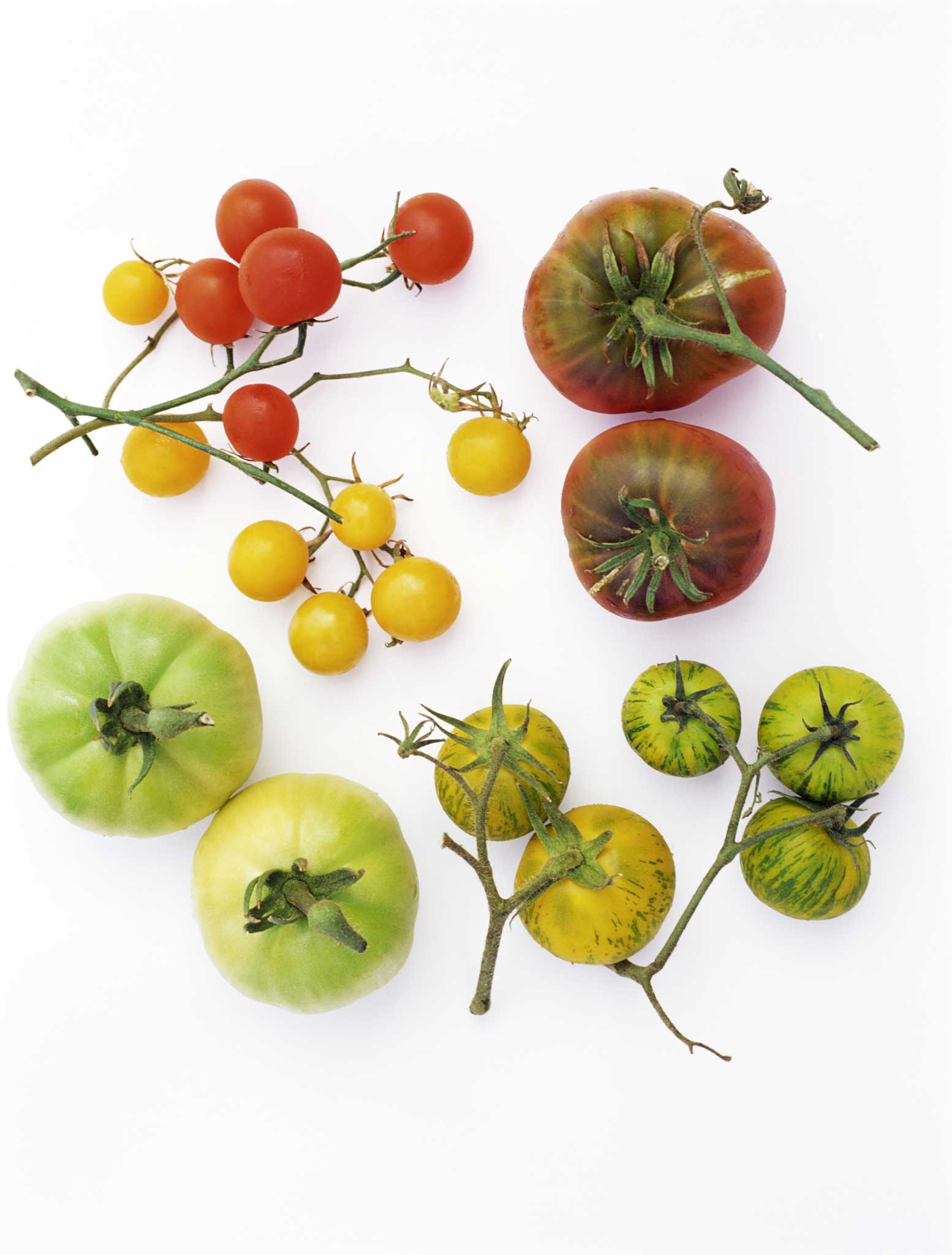If you want luscious homegrown tomatoes in your summer salads, start planning now

Top job for June
Plant outdoor tomatoes. If you are lucky enough to have a greenhouse, your tomato plants will already be setting fruit. But if you are growing tomatoes outside, you can't be in too much hurry. They hate being cold. The leaves turn blue and the plants stop growing.
It's too late now to sow seed, though that is the cheapest way to grow tomatoes. You'll have to buy plants, but most garden centres now have a good selection of varieties. There is life beyond 'Alicante'. For a decent crop outside, you need some luck with the weather. Last summer was a cracker and we had great crops, particularly from the outstanding orange cherry tomato 'Sungold' and the raspberry-coloured 'Rosella' which I had raised from seed.
Blight is the biggest problem if you grow tomatoes out of doors. It's a fungus, a kind of phytophthora, which infects the leaves and fruit of tomatoes. The same blight can affect a potato crop. It is worse in a damp summer than a dry one, as the spores are carried in on the wind but need a moist surface area to catch hold and do their damage. Brown patches develop on the tomato fruits and the edges of the foliage. It looks a bit like frost damage, but you get that at the beginning of the tomato-growing season. Blight develops later in summer.
You can spray, but fungicides are preventatives, not cures. You have to start spraying as soon as the first fruits set and go on spraying every two weeks to the end of the season. I've never bothered. The best way of avoiding blight is to grow fast-maturing varieties such as 'Red Alert' and 'First in the Field'. Small tomatoes ripen more quickly than big beefsteak types. And if you grow potatoes, set your tomatoes as far away as possible from the potato patch. Potatoes, with their big leafy stems, catch the blight quicker than tomatoes and then pass it on.
When you are buying, check first that the variety is suitable for growing outdoors. Some tomatoes such as 'Orkado' and 'Rose de Berne' are by nature late to ripen so are best grown in a greenhouse. The best choice for outdoor growing are the cherry tomatoes. You also need to know whether the plants you buy are cordon types or bush.

Cordon tomatoes need to be trained up a tall cane and tied in at regular intervals. Pinch out the little shoots that develop in the leaf axils, otherwise the plant will waste its energy producing leaf rather than flowers and fruit. Bush tomatoes do not develop on long single stems but splay out into low mounds of growth. You just plant them and let them go. They are incredibly reliable and easy, though the fruits are closer to predatory slugs and snails.
Plants need watering in well when they are first set out, whether you plant them in pots, grow-bags or the open ground. But once they have settled and are growing away, you shouldn't water too much. Overwatered tomatoes (and sweetcorn, French beans and runner beans) produce leaf at the expense of fruit. It dilutes the flavour, too. Hold off until the plants begin to flower, then start watering again. Grow-bags are better for bush tomatoes than for cordons.
And when, at the end of the summer, you freeze your surplus, don't skin them. Bag them up in kilos, just as they are. They stay whole and separate like marbles rolling round in a bag. This is a huge advantage when you want to use them. You do not have to hack and bash away at a solid frozen mass to extract what you need. When you run a frozen tomato under a cold tap, the skin just drops off like silk. The shape doesn't stay, of course, but the flavour seems unimpaired, perfect for sauces and soup.
Find time to
Prune shrubs that have flowered in April and May. Pruning is not essential, but is a useful strategy if you are gardening in a small space. Weigela, for instance, can sprawl over a far larger area than it deserves. Each year, take out a couple of stems entirely, cutting them down to ground level. Deutzia can be treated in the same way. Yellow-flowered broom also can be cut back, but here the technique is different. You don't cut back into old wood (it won't sprout again if you do), but shorten the shoots that have just flowered to within 5cm of the older wood.
Divide bearded iris. This doesn't need to be done every year, only if the clumps are congested with a mass of unproductive old rhizomes. Dig up the iris carefully, snap off old, bare sections of rhizome and replant the newest pieces, each of which should have a fan of fresh leaves sprouting from it and an underpinning of pale, fat roots. Refresh the ground with a couple of handfuls of bonemeal before you plant and trim the leaves down to about 15cm.
Dead-head lilac when it has finished flowering. Do the same with rhododendrons and azaleas. If necessary, cut back Clematis montana which can become a smothering thug.
Plant young leeks which you can buy now in bundles at garden centres. Make deep holes with a dibber, roughly 15cm apart, in rows about 38cm apart. Drop a leek into each hole and water it in (take the rose off the watering can – you want a flood not a sprinkle). This washes enough soil over the roots to satisfy the leek. You need do nothing else.
Think about
Trimming evergreen hedges such as box, yew, the dreaded leylandii, pyracantha and Berberis darwinii. For the time being, I've stopped clipping the low box hedges we planted alongside the paths. The less cut surfaces the better, it seems to me, while box blight is such a mystery. Some patches in our hedges died back completely, other stretches have recovered. Bushes that have never been cut remain untouched by blight.
Earthing up potatoes. This is a bit-by-bit job, but potatoes planted in March are probably far enough advanced to benefit from you drawing soil up around their stems. They will grow without being earthed up, but it does give plants extra stability. One year I just mulched with grass cuttings and produced some of the best potatoes I've ever grown.
Plant brassicas such as Brussels sprouts, broccoli, kale, Savoy cabbages and the like. These will be available as strong young plants now and you need to give them plenty of room: 60cm apart in rows 75cm apart. Stamp them in – they like firm ground – and water them well before protecting them with fine netting against the cabbage white butterfly.
Join our commenting forum
Join thought-provoking conversations, follow other Independent readers and see their replies
Comments